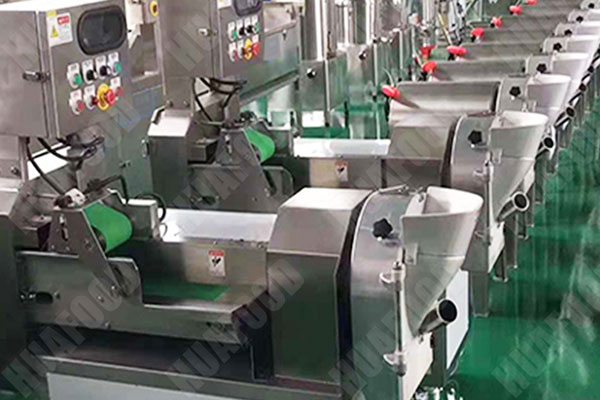南非的工业蔬菜切割机部分嵌入了快速扩展的食品加工设备市场中, 产生了美元 1,520.1 百万收入 2022 预计将达到美元 2,218.6 百万 2030 (CAGR 4.8%).
在这个更广阔的市场中, 仅仅水果和蔬菜行业预计将增长到美元 2.38 百万 2025 在 7.7% CAGR (2025–33), 由城市化和一次性一次性收入驱动.
农业食品综合体大约贡献 124 十亿 (≈usd 6.8 十亿) 到南非的GDP并雇用 451,000 人们, 强调当地对加工设备的需求.
在中东 & 非洲地区, 工业食品切割机市场的价值为美元 137.1 百万英寸 2023 并有望在 2.09% 复合法 2032, 强调稳定, 如果中等, 南非行动中切割机的增长潜力.

南非的市场动态
农业生产商和食品服务的需求不断上升
面向出口的水果和蔬菜处理器需要高容量的切割线,以满足质量严格的质量和吞吐量目标
同时地, 南非不断扩大的快速服务餐厅, 酒店, 中央厨房正在投资商业切割机以简化准备工作并降低人工成本.
关键技术功能 & 成本驱动器
选择工业蔬菜切割机时, 南非买家专注于:
1. 吞吐量能力
机器范围为60-120 kg/h (小型商业单位) 到 1,200 公斤/小时 (工业模型). 较高的吞吐量机需要更强大的电动机, 增强框架, 和更大的切割头, 增加资本成本
2. 刀片系统 & 切割多功能性
成本随刀片的数量和类型而异 (切片, dit, 切碎). 多盘系统或快速变化的刀片持有者增加了价格,但没有多台机器提供更大的产品多样性
3. 自动化 & 控制
基本型号使用手动馈入溜槽和开/关控; 高级机器集成了PLC和HMI触摸屏,用于可编程食谱, 安全互锁, 和数据记录. 这些自动化软件包可以增加15-30%的基本单位价格.
4. 建造 & 卫生标准
食品级SUS304不锈钢, 抛光焊缝, 以及IP评级的电动机确保遵守当地健康法规和易于清洁. 升级的饰面和较厚的钢板钢提高了耐用性和成本.
5. 售后服务 & 备件
本地服务网络和随时可用的刀片更换最小的停机时间. 由一年保修和库存零件支持的模型 (例如。, 来自烹饪设备公司和Caterweb) 命令高价定价,但会降低机器生命周期的TCO.
投资回报率注意事项
劳动节省: 自动切割可以降低人工成本 50%, 在12-18个月内为大量用户获得回报
减少废物: 精密刀片和受控饲料机制减少了产品损失, 提高产量3-5%.
吞吐量收益: 更快的切割周转支持更大的批量大小, 使处理器能够更有效地服务窗口.
结论 & 建议
南非的蔬菜加工行业为工业切割机供应商提供了强大的机会, 受强劲出口需求和种植国内餐饮服务的支撑. 评估工业蔬菜切割机时, 买家应该:
与当前和预计的吞吐量保持一致.
评估针对产品投资组合的刀片多功能性.
投资自动化以始终如一的质量和数据见解.
优先考虑卫生和售后支持以最大程度地减少停机时间.
有关针对南非运营优化的切割机的量身定制建议或报价, 联系领先的本地供应商,例如烹饪设备公司, Zhauns, 和caterweb. 他们的安装专业知识, 训练, 和备件的物流可确保您的投资从第一天开始驱动生产力和盈利能力.
 蔬菜清洗机
蔬菜清洗机

